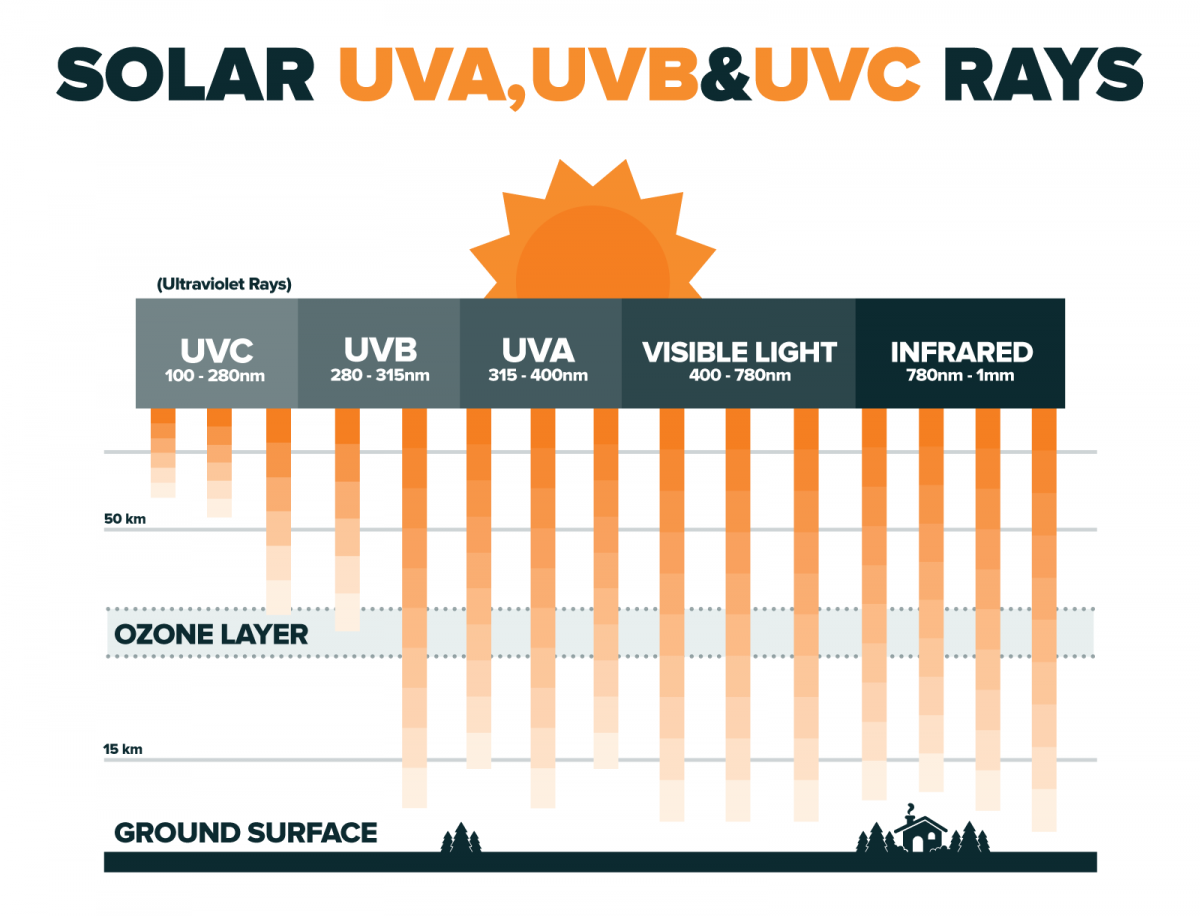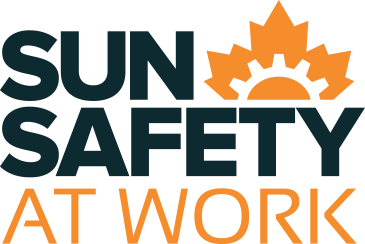Everyone is exposed to solar ultraviolet (UV) radiation - it is energy from the sun. Sometimes solar UV is called the ‘rays from the sun.’ The sun also emits visible and infrared radiation. These are all part of the electromagnetic spectrum which is described in terms of wavelength. For UV, the wavelength range is 100-400 nanometers (nm) and it is divided into three categories:1
- UVA: 315-400 nm – all UVA radiation reaches the earth’s surface
- UVB: 280-315 nm – 10% of UVB radiation reaches the earth’s surface
- UVC: 100-280 nm – completely filtered by the earth’s ozone and atmosphere, so it does not reach the earth’s surface
Some of the radiation from the sun is in the form of light that you can see. UV is invisible and the energy is stronger than visible light. The shorter the wavelength, the more damaging it can be.
With its shorter wavelength, UVB is the major cause of sunburn (also referred to as erythema) and skin cancer. Solar UV is commonly measured by the UV Index. The UV Index is an important part of assessing worker risk for UV each day.

How dangerous is solar UV radiation for outdoor workers?
Sun exposure at work causes sunburn and is a significant risk factor for both skin cancer and eye damage. Outdoor workers often work outside when solar UV is the strongest, between 11am-3pm.
Solar UV is the major cause of skin cancer. Outdoor workers have up to 3.5 times greater risk of developing skin cancer compared to indoor workers.2 About 4560 skin cancers are attributed to occupational exposure to the sun in Canada each year, based on 2011 statistics.3 The more sunburns you have over your life, the greater your risk of skin cancer.4
Eye damage is also a concern. Being exposed to solar UV for short intense periods can cause photokeratitis. Over a long period of time it can lead to age-related macular degeneration, cataracts, eye cancer, and tissue growth on the white of the eye.
The good news is that these conditions are preventable.
How can workers and workplaces be more sun safe when it comes to solar UV?
Workers and workplaces both have a role in workplace sun safety. Workplaces can be more sun safe by implementing a sun safety program.
Workers can the follow six simple steps below to protect themselves from solar UV radiation.

- 1. World Health Organization, World Meteorological Organization, United Nations Environment Programme & International Commission on Non-Ionizing Radiation Protection. (2002). Global Solar UV Index: A Practical Guide. Retrieved from http://www.who.int/uv/publications/en/UVIGuide.pdf
- 2. Radespiel-Tröger, M., Meyer, M., Pfahlberg, A., Lausen, B., Uter, W., Gefeller, O. (2009). Outdoor work and skin cancer incidence: a registry-based study in Bavaria. Int Arch Occup Environ Health, 82, 357–36.
- 3. CAREX Canada and the Occupational Cancer Research Centre. (2016). Solar Radiation: Burden of Occupational Cancer Fact Sheet. Retrieved from: https://www.carexcanada.ca/CAREX_OCRC_Burden_of_Occupational_Cancer_-_Results_package.pdf
- 4. International Agency for Research on Cancer. (2012). Radiation: Volume 100D A Review of Human Carcinogens. Retrieved from http://monographs.iarc.fr/ENG/Monographs/vol100D/mono100D.pdf

